Biarritz – France
Biarritz is a stylish seaside town on France’s Côte Basque (Basque Coast) 22 miles from the Spanish border. It has been a favorite of high society and European royalty since 1855 when Spanish born Empress Eugénie and Napoleon III built their summer villa overlooking Plage Miramar. Their presence transformed the simple whaling village of Biarritz into a fashionable seaside resort.
In 1880, Villa Eugénie was sold and converted into Hôtel du Palais. In 1903 it was partially destroyed by fire, but was soon rebuilt in royal style and continued to welcome an international crowd of the rich and famous until after the Second World War. The hotel closed for several years during the 1950s at a time when Biarritz lost its luster as a destination for international jet setters. But by the early sixties, a refreshed and restored Hôtel du Palais was once again drawing movie stars, politicians, royalty, and financiers, from across the globe.
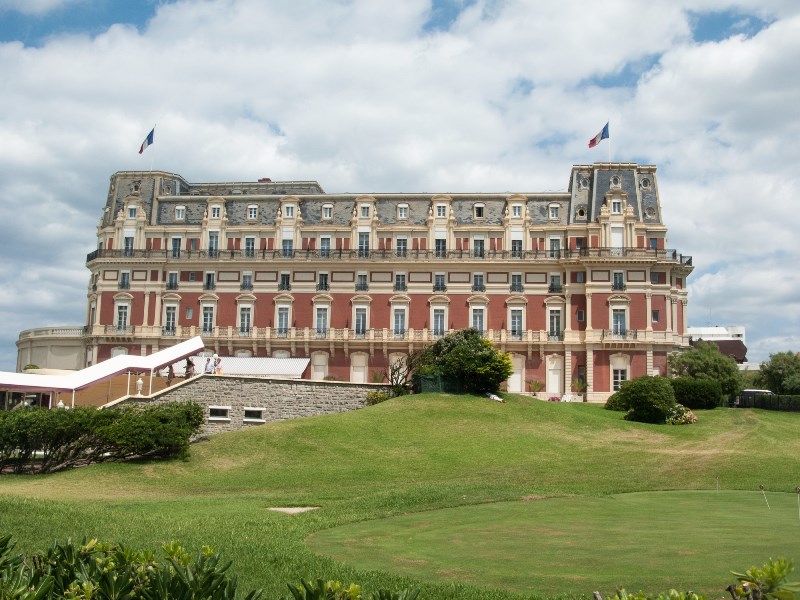
As recently as 2019, it was once again refurbished, and today it’s a luxurious hotel fit for nobility, while Biarritz has evolved into both a casual surfer’s paradise and a seaside destination that draws the trendy, the ritzy, and families in search of a laid-back beach vacation getaway. The fusion of elegance and a relaxed surfer style has contributed to Biarritz’s renewed allure and popularity.
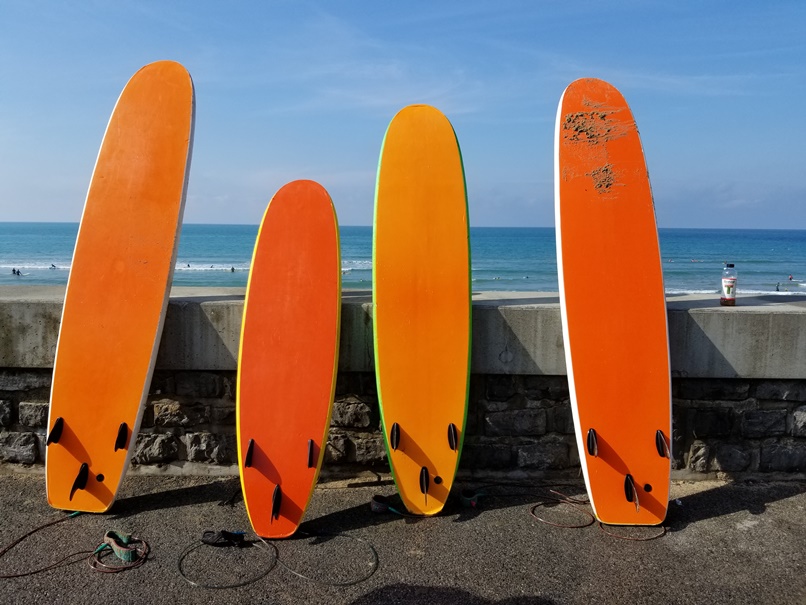
Always in search of small hotels with unique charm, we chose Hotel Edouard VII, housed in a historic 19thcentury building, which was once home to the mayor of Biarritz and the location where Napoleon III would receive medical care during his summer sojourns in Villa Eugénie.
Located in a quiet neighborhood, the hotel is a five-minute walk from the restaurants and shopping areas and a ten-minute walk to the beaches and oceanfront. Our suite was spacious,
flooded with natural light and furnished with understated elegance and comfort in mind.
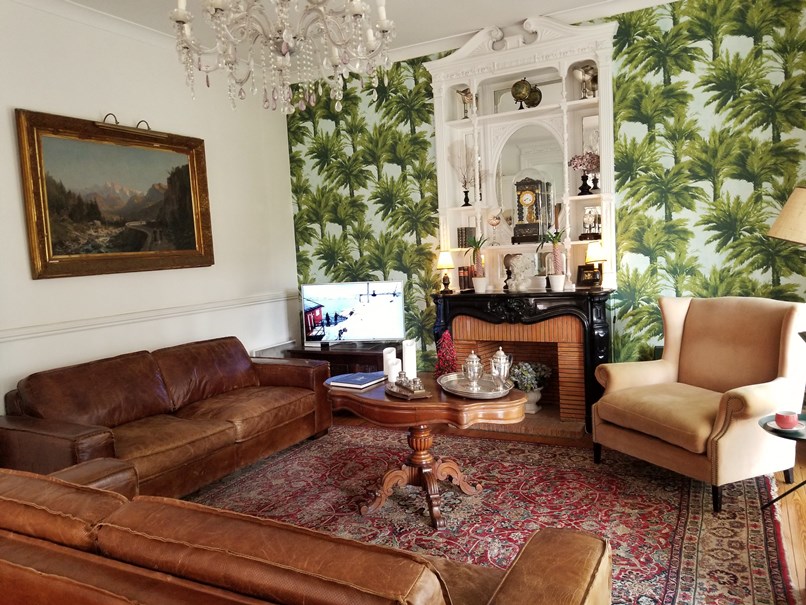
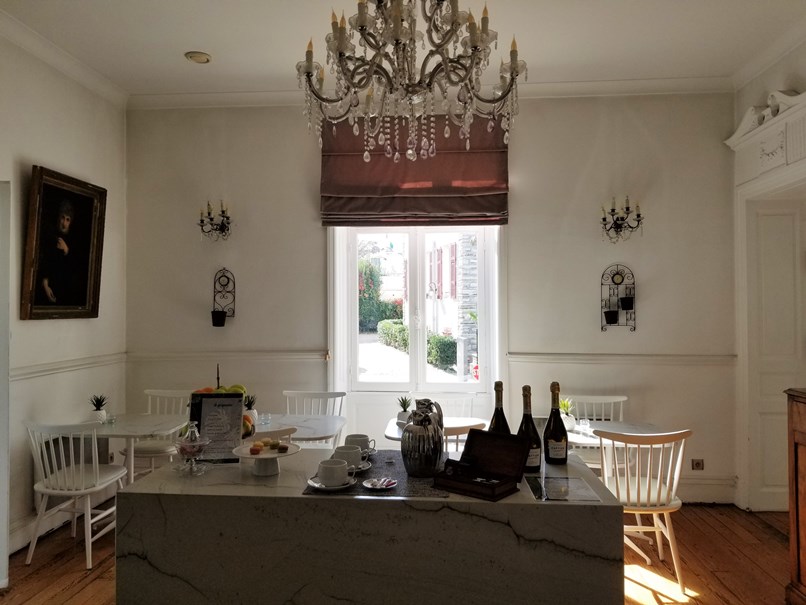
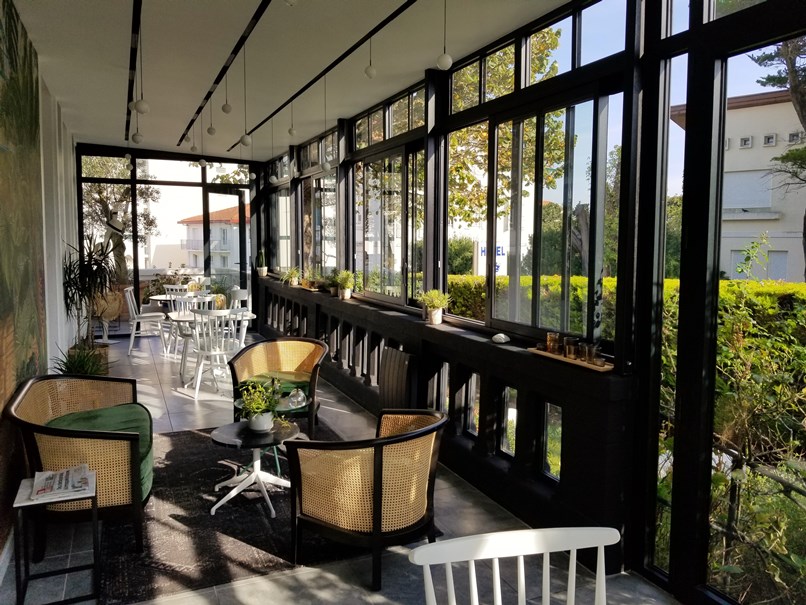
The restaurants that populate the maze of tiny streets leading to Port Vieux offer an overwhelming choice of fresh fish dishes and the bars – a delectable assortment of French, Basque, ‘pintxo,’ which across the Spanish border are known as ‘tapas.’ Pintxo and tapas are savory hors d’oeuvres usually served on a small slice of lightly toasted baguette. (Check out Bar Basque).

Les Halles food market at 11 Rue Les Halles is a gastronomical experience not to be missed. It’s like a museum of food where you get to purchase and savor the vast mosaic of delicacies. Sunlight filters in through the wood-beamed, glass ceilings illuminating the array of gourmet delights that line the isles.
We would walk the length and breadth of the indoor market selecting a smorgasbord of small portions: smoked mussels; tiny marinated fresh sardines; sundried tomatoes stuffed with soft white cheese and herbs; marinated grilled eggplant; stuffed mushrooms; grilled artichokes; hummus; goat cheese; salami; whole wheat baguette, and thin toasts. Then we’d head for the oceanfront where we’d choose a quiet spot with a panoramic view to enjoy our picnic brunch.
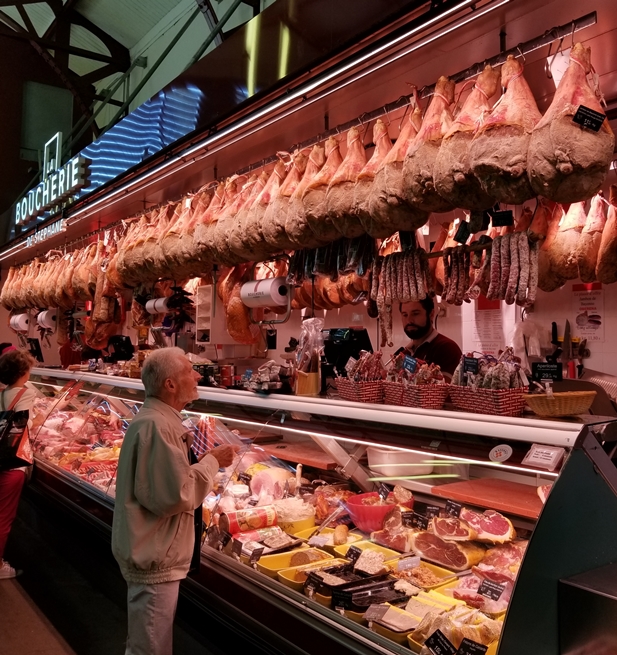

The original whaling village of Biarritz was built around Port Vieux (The Old Port), which is a calm cove that is akin to a giant swimming pool. Today, its golden crescent-shaped beach is dotted by sun-worshippers and overlooked by a terraced bar and restaurant, historic mansions, and luxury condominiums.
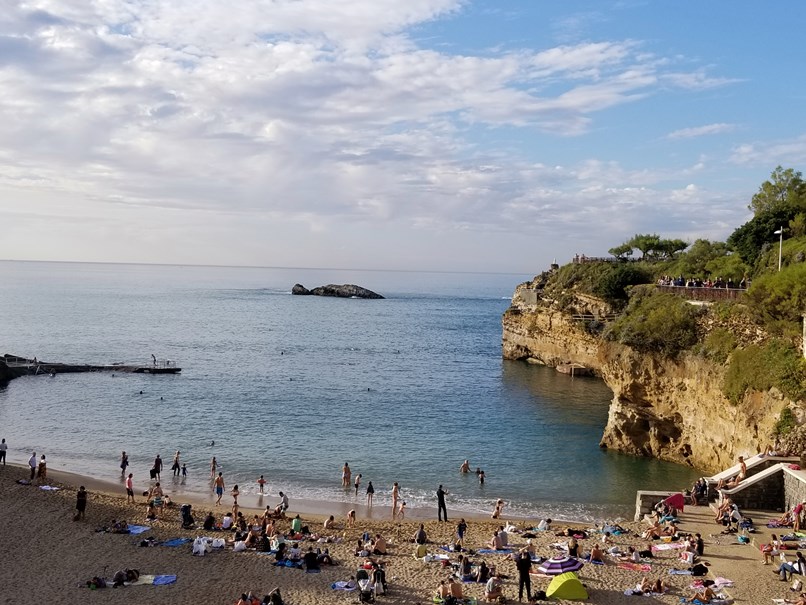
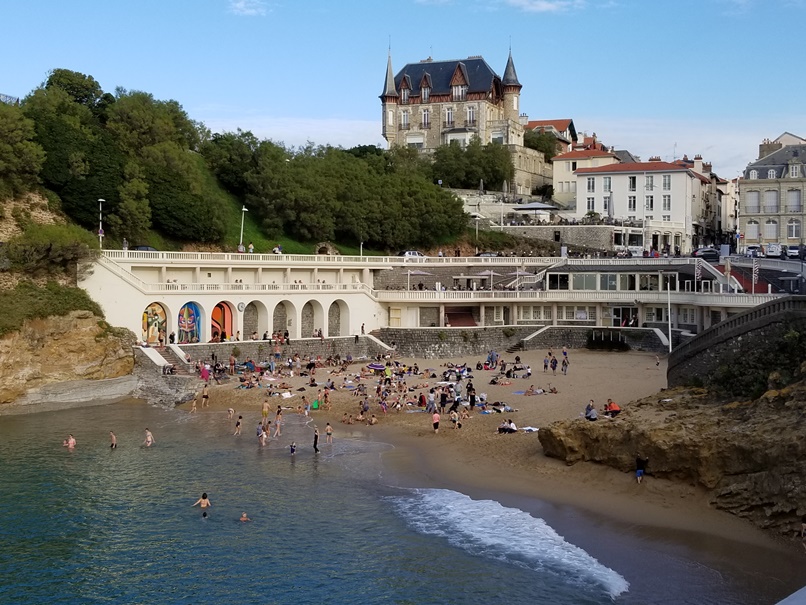
Esplanade de la Vierge leads to a Biarritz landmark: Le Rocher de la Vierge is a statuesque rock topped by a sculpture of the Virgin Mary. Legend has it that when fishermen found themselves caught in the stormy seas, they were guided back to port by a divine light, hence the tribute to the Virgin Mary, who has a sweeping view of the open seas.
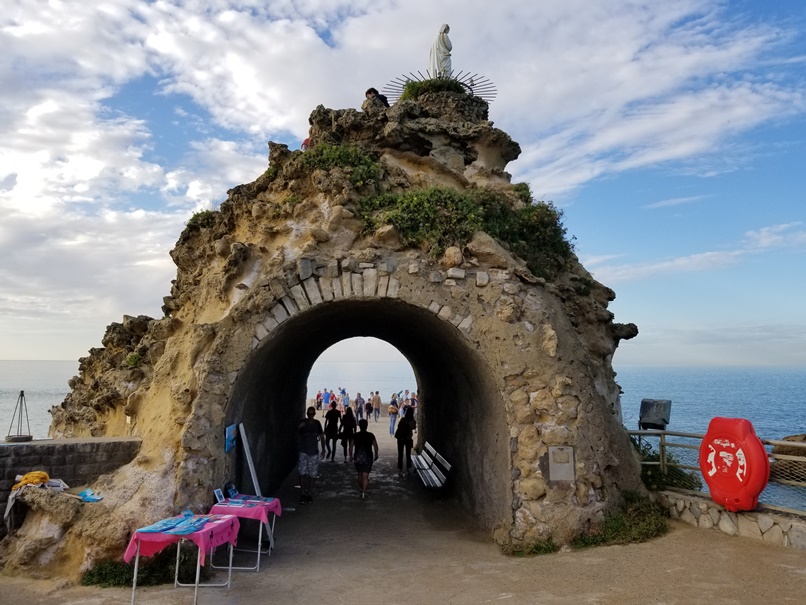
The first bridge that linked the shore to Rocher de la Vierge was a wooden bridge commissioned by Napoleon III in the 19th century. Subsequently, it was replaced by a metal bridge named after the French architect Gustave Eiffel. Today, locals and visitors alike delight in the gorgeous sunsets and unobstructed ocean views from the rock.
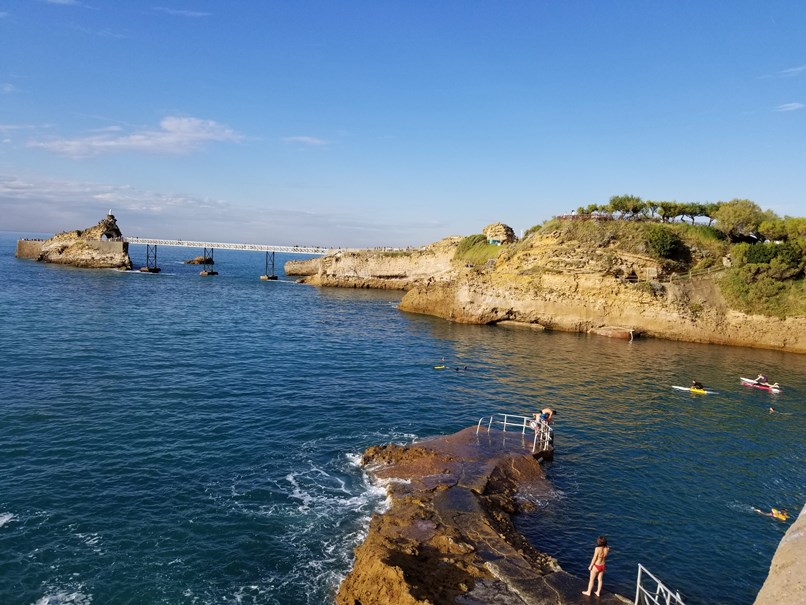
When crossing the bridge, look out to your right at nature’s perfect stone archway that stands in the sea. You’re likely to see paddle boarders waiting their turn to dive off a rocky ledge and disappear in a sparkling ball of white surf as they hit the water.
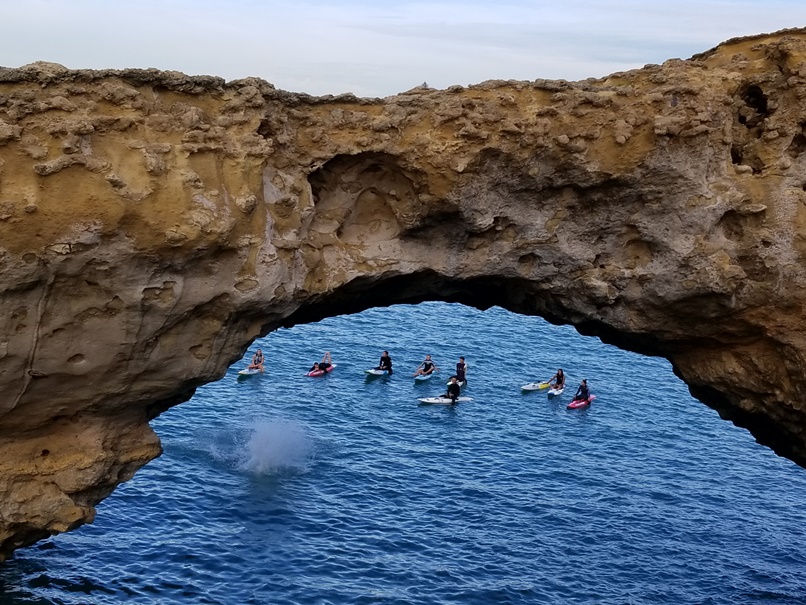
Pop into the aquarium to learn more about the whaling history of Biarritz and view their collection of sea life from the Bay of Biscay. Visit the barracudas, the shark tanks, and the seals. From the aquarium, take Allée du Port des Pêcheurs, an uphill walk that meanders through gardens, along pathways, and forested areas.. Breathtaking vistas appear around every corner, the most spectacular being your first glimpse of Le Port du Pêcheurs, which is watched over by the neo-Gothic, Eglise Sainte Eugénie, where fishermen and sailors would go to pay homage to the patron Saint Eugenia.
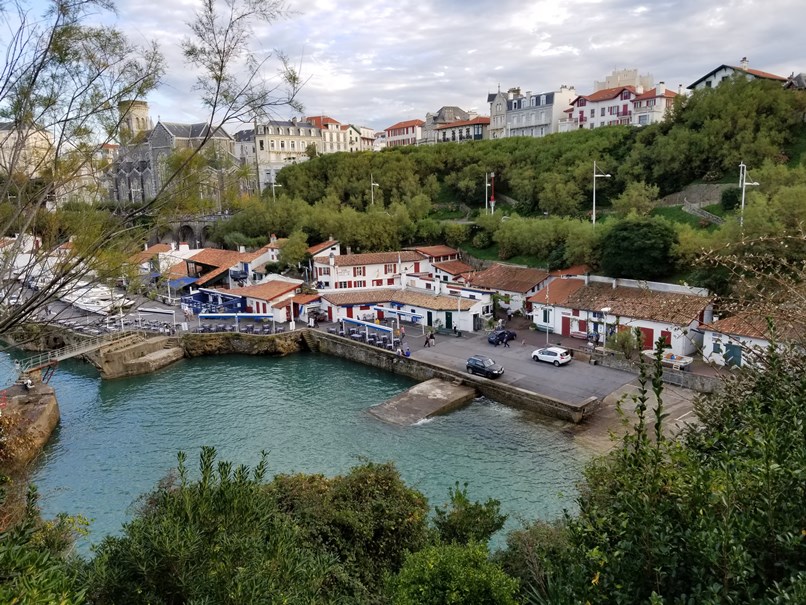
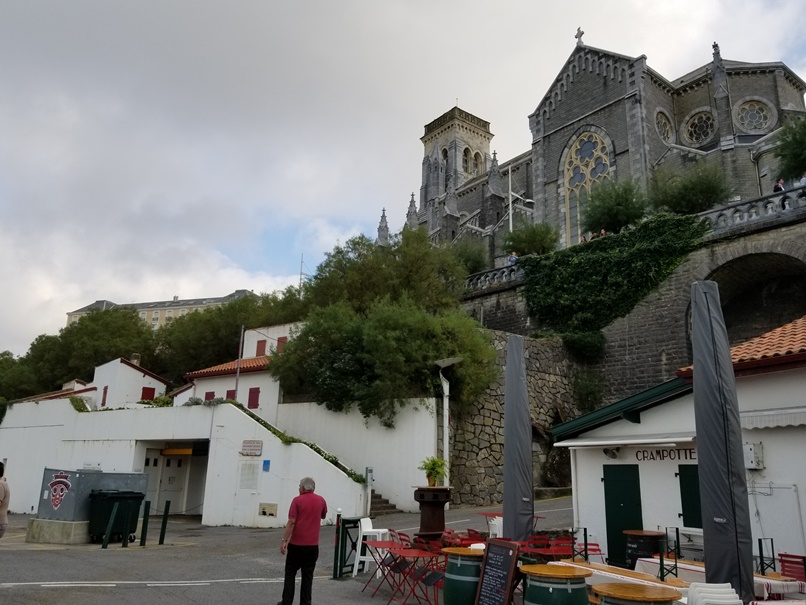
Quaint white-washed, red-roofed fishermen’s houses known as ‘crampottes’ form a backdrop to the port. Today these historic little homes are still in use. Some are used by fishermen to store their equipment, while others have been converted into seafood restaurants choc-full of charm.
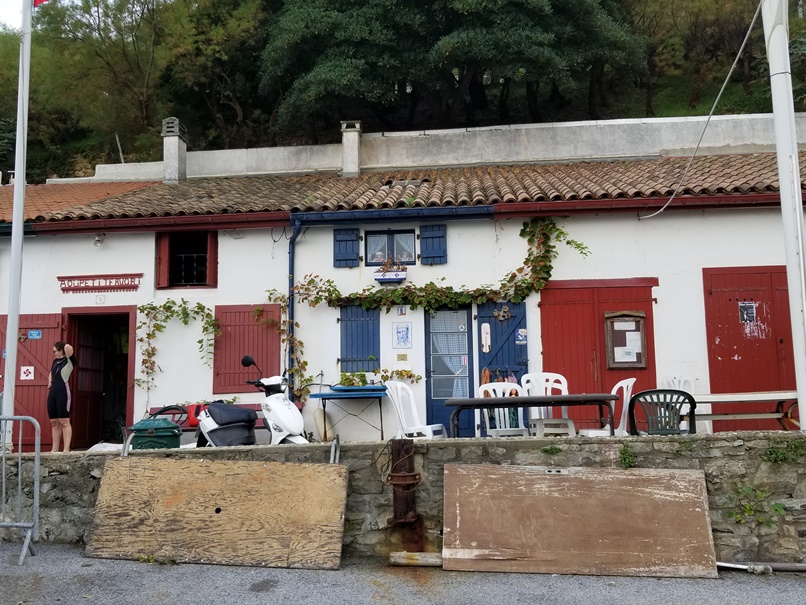
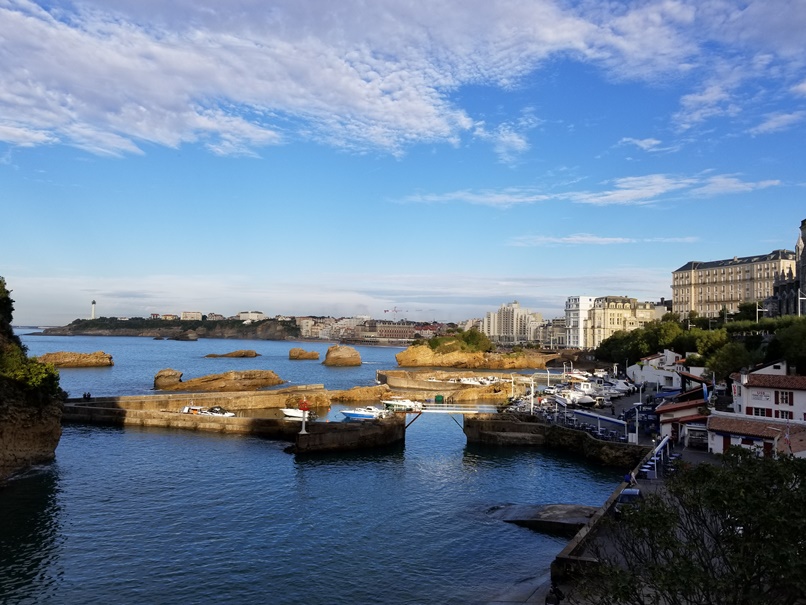
Continuing north, one reaches a wide esplanade that hugs the ocean and an expanse of golden sand comprised of Grande Plage and Plage Miramar. The art-deco style Casino Municipal which rests just steps from the beach, is fronted by an outdoor cafe that’s shaded by cherry-red umbrellas. It’s an ideal setting in which to relax with a cup of coffee and patisserie or a glass of wine, take in the beach scene, and watch the world go by.
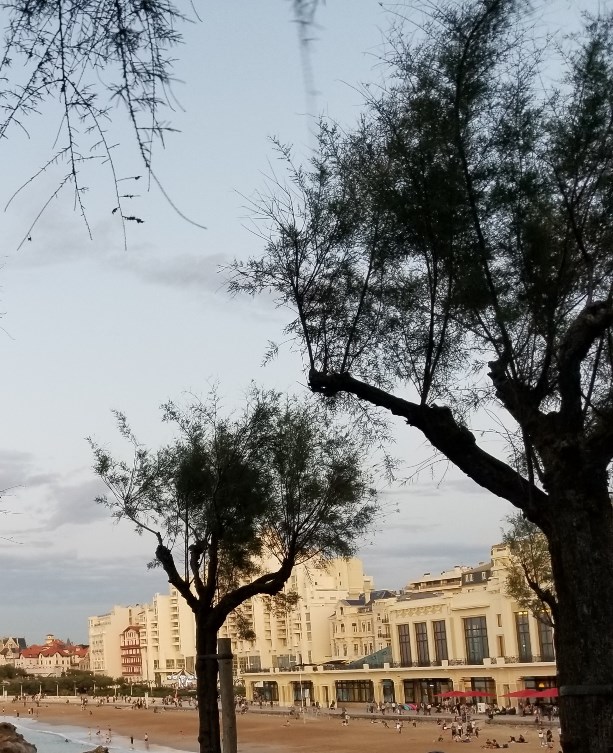
The historic Hôtel du Palais (originally the Villa Eugénie) gracefully takes command of a prime location at the end of the esplanade, where it faces Plage Miramar and the Atlantic Ocean. Beside it stands the Eglise Russe de Biarritz (The Russian Orthodox Church) built in a Byzantine architectural style in the late 19th century by Russian aristocracy. The interior is decorated with icons that were brought from St. Petersburg directly to Biarritz.
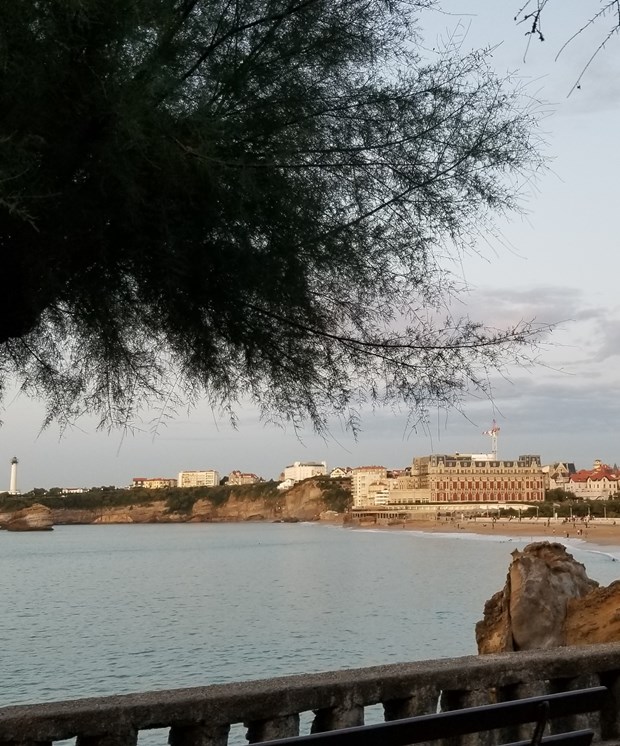
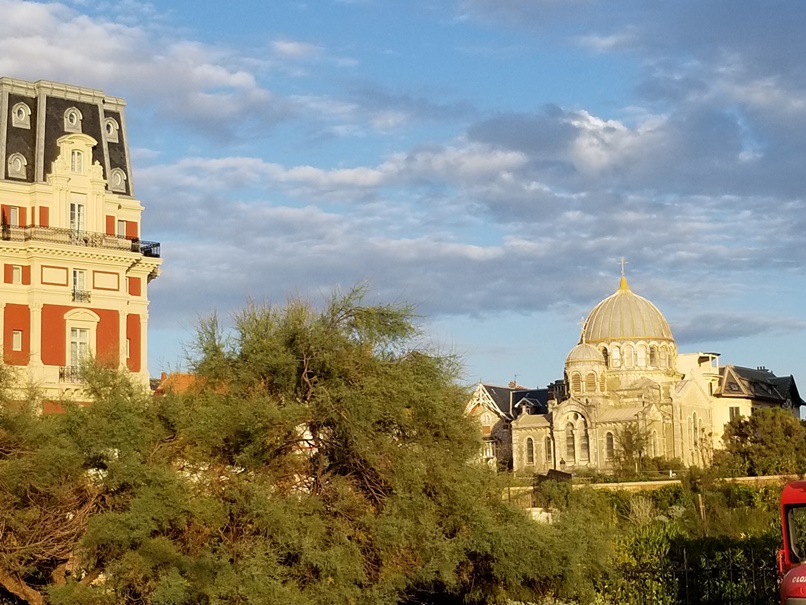
From Russian aristocracy to surfing!
Head south from Port Vieux along the esplanade that becomes Boulevard du Prince de Galles. You’ll pass the medieval style Villa Belza perched atop a rocky outcrop pounded by the surf during high tide. It reminds one of something between a haunted house and a grand mansion depending on whether the sea is churning, and dark ominous storm clouds hover overhead, or the ocean is as tranquil as a turquoise lake, and the skies are swimming in blue.
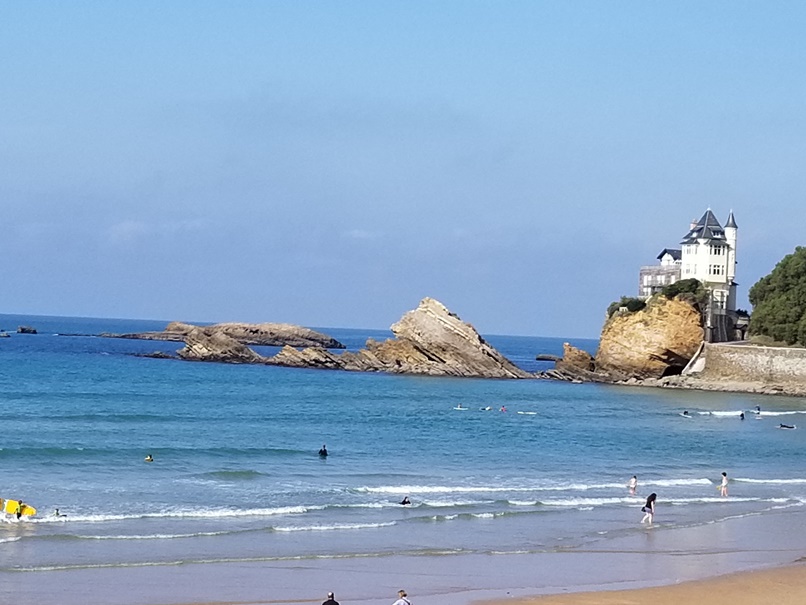
Round the corner, and you’re in surfing territory as the world-renowned Plage de la Côte des Basques comes into view. If you aren’t on or carrying a surfboard, you may feel out of place. Young children, teenagers, and adults alike are taking surfing lessons; there are beginner surfers, instructors, good surfers, and world-class surfers. We opted to sit in the sunshine at a cafe above the beach and take in the surfing scene.
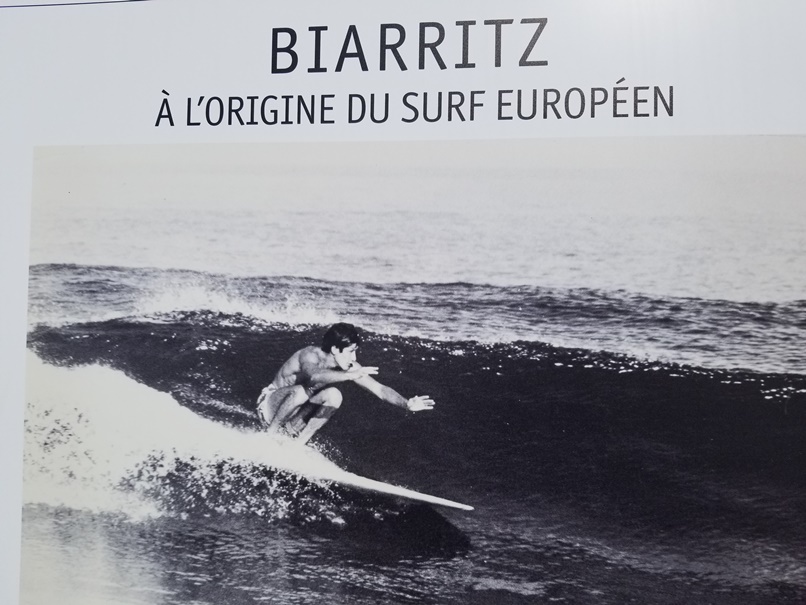


A word of caution: My photos show all the beaches at a time when the seas were as calm as lakes. By late afternoon the surf at Côte des Basques was up, and huge waves crashed into the seawall. The sandy beach totally disappeared from sight. The ocean at Grande Plage and Plage Miramar also transformed from a flat lake-like surface to pounding surf and rough tides.
Biarritz has much to offer and is an ideal destination to kick back and regroup after weeks of active sightseeing.
From Biarritz, drive across the border into Spain’s Basque country and visit the incredible town of San Sebastian. (See listed in the menu of my website under Spain).
Disclosure: I did not take the photo of Hôtel du Palais, with the green lawn.
